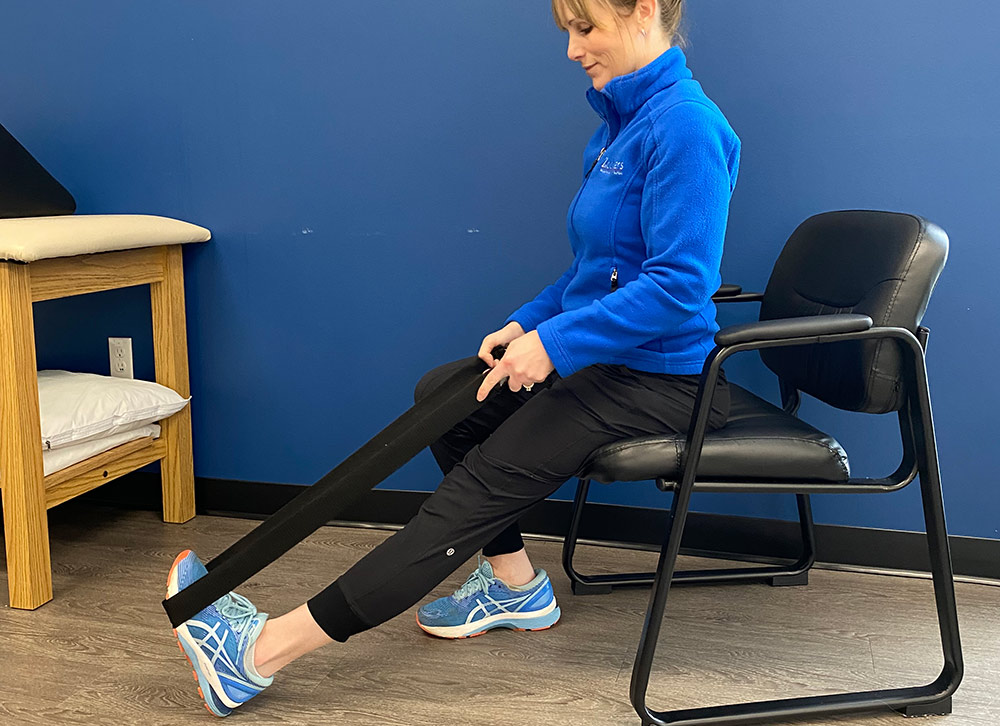Book an assessment with Zoomers now!
Use our online booking tool to find a time that works for you!
As a physiotherapist, I often hear complaints about foot pain. When it hurts to walk, it can make daily and recreational activities difficult. One of the most common areas of foot pain is on the bottom extending from the heel into the arch of the foot; this is commonly diagnosed as Plantar Fasciitis.
The plantar fascia is a tough band of tissue that begins at the heel and expands out like a fan on the bottom of your foot. Its role is to help support the joints of the foot. Plantar Fasciitis occurs when this band is stressed excessively, often due to the downward pressure of the arch of the foot. Factors including insufficient shoe support, walking on very firm or uneven terrain, and a spike in weight-bearing activity can all contribute to the development of Plantar Fasciitis.
We have an increased risk of developing Plantar Fasciitis when we spend more time at home and in either bare feet or less supportive shoes than normal. Additionally, if we increase our walking frequency (although fantastic for your general health), it can overwhelm this tissue if the volume of walking increases too quickly, and may result in plantar fasciitis.
Wondering if your foot pain is Plantar Fasciitis?
Typically, plantar fasciitis makes the first few steps in the morning excruciatingly painful. Once you are moving, the pain often settles (at least somewhat) only to worsen if you’re lifting something heavy, on your feet for a long time or upon walking after a period of rest.
Think you have Plantar Fasciitis?
The good news is that Plantar Fasciitis can be quite manageable without laser treatment. The sooner you take action after the onset of the first symptoms, the easier it will be to get it under control. While laser treatment can be effective in reducing your pain and inflammation associated with plantar fasciitis, there are many ways you can manage your symptoms right at home.
It is always a good idea to seek medical evaluation with a physiotherapist for your foot pain to ensure you’re optimizing your recovery. Physiotherapists can suggest many different treatment options that may help you avoid the need for laser treatment.
Here are 3 easy strategies to try at home that can be helpful in managing pain on the bottom of your foot.
Self-Massage
First thing in the morning, gently rub the bottom of your foot between your heel and toes for 3-4 minutes. This will loosen up the tissue if it has tightened up overnight.
Calf Stretch
Stretch the muscle in your lower leg by placing a belt around the bottom of your foot and gently pulling upwards (while keeping the knee straight). You can do this while sitting on the edge of your bed with your heel on the floor. Hold for 20-30 seconds and repeat 2-3 times.
Sneakers
Once you have done some gentle massage and the stretch, put your shoes on before you stand up in the morning. This can protect the irritated tissue from the forceful stretch of weight bearing in bare feet.
These simple strategies may provide some relief of your symptoms while you wait for an assessment with your physiotherapist. Even if these strategies work for you, there will be more work to do to ensure a complete recovery and limit the likelihood of recurrence of your symptoms. Although laser treatment has been shown to be beneficial in the management of plantar fasciitis, we recommend booking an appointment with a physiotherapist who can provide you with individualized treatment options.
Book an assessment with Zoomers now!
Use our online booking tool to find a time that works for you!


